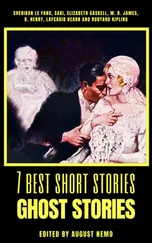Wallace was beginning to feel like time was passing him by. He read in the New York Review of Books about electronic publishing and wondered what it meant that he didn’t like the idea, was wed to the artifact—“the traditional galleys-and-proofs-and-pub-dates-and-real-books-with-covers-you-hate” approach, as he wrote to DeLillo. He used to welcome change, he remembered: “The whole thing makes me feel old, sort of like the way Heavy Metal music or cum-shots in mainstream movies make me feel.” When his high school class in Urbana had celebrated their twentieth reunion the year before, Wallace hadn’t been able to attend — he was at Marfa — but sent a check for a floral arrangement for classmates who had died and asked for someone to videotape the event. Shortly afterward, he came through Urbana and was absorbed by the images of his classmates celebrating, which he watched in the home of the class reunion chair. He apologized to her for not having been more sensitive to her depression when they were students, and when he found out she worked with the man whom as a boy he had tormented with snowballs, he wrote a letter apologizing to him too. He made amends wherever he could, sometimes to excess. 22He wrote to his Arizona sponsor that “I struggle a great deal, and am 99.8 % real,” then crossed that out and wrote in “98.8 %,” noting in a parenthesis in the margin, “Got a bit carried away here.”
Wallace knew it was time to leave Illinois State. His writing was stuck and his relationships with women were falling into a pattern so predictable that even he saw the humor in them. 23The university had also begun to back away from “the Unit,” the oasis for experimental literature in the prairie. Wallace cared little by now for this kind of writing, but the people who had worked so hard to create it mattered to him.
Ever since Infinite Jest , various high-level writing departments had put out feelers to him in the hopes that this well-known author, so obviously wasted on a second-tier midwestern university, would be willing to move. In the fall of 2000 he received a letter from Pomona College, in Claremont, California, which had just created a chair in creative writing. Wallace responded to the English department chair with caution. The department head, Rena Fraden, reassured him that the post was designed for a full-time fiction writer. On a later call he joked that all his friends had gotten a letter too, including Franzen (who said he was not interested and recommended Wallace). He and Fraden agreed that he would visit the school in December and give a reading and teach a class to see what he thought of the school. When he came, the students at the class, as one remembered, sat “in a narcotic state of awe.” Wallace taught a workshop and said if he could leave them with one thing it was the difference between “nauseous” and “nauseated.” He gave a reading to a small group in Crookshank Hall and met the faculty and liked them. He went to a dinner at Fraden’s house, where the participants each talked about a book that had affected him or her deeply. One mentioned Clarissa ; another Thomas Malory’s Morte d’Arthur . Wallace surprised all by naming a popular page-turner (no one can remember quite which).
Wallace quickly bonded with Fraden. She was the sort of sympathetic, uncompetitive academic whom he could count on to provide the special conditions that helped him to work, a successor to Dale Peterson, Mary Carter, and Charlie Harris. Pomona began to look like a place where he could make a new start. He and Fraden discussed that evening what it would take to get him to leave Bloomington. He asked for as little teaching as possible; Fraden agreed. The department voted to end the interview process and offer him the job. A month later, Wallace accepted. “The students actually appear to like to read and write, which will be a welcome change,” he wrote to Peterson. “I have gotten very tired (and sometimes impatient) with having to be a disciplinarian in order to get ISU students (the bulk of them, anyway) simply to do their homework.” He had promised ISU that he would teach a full year after his second leave, and he meant to keep that promise, but he was already looking forward to a new start. He pointed out to Morrow that he had been “home” for almost a decade and explained to Curtis White, his colleague in the department, that it was time for him to grow up.
In midsummer 2002, Wallace left Bloomington in the Volvo he’d bought with some of his MacArthur money, Werner and Jeeves in the back. It had been nine years since he’d last changed jobs. Francis B. and his mother raced him to his first stop, a hotel in Columbia, Missouri, so that when Wallace looked up at the front desk, he found his friend signing the registry. The joke fell flat, though: it turned out the forty-year-old author was traveling, not with professional dog movers hired by Pomona, as he had told them, but with Sarah Caudle, a young mother who had been a longtime friend and was now his girlfriend. It took the couple six days to drive west. During the trip they ate in their motel room so that the dogs were never alone. In St. George, Utah, Wallace wanted to go to a recovery meeting. He found a listing in the phone book, but by the time the sponsor called back it was too late.
When they got to Claremont, bleary-eyed and anxious, they drove up and down the streets. The Mission-style strip malls astonished Wallace — he wondered, as he always did when faced with something new, if he had made a mistake. Wallace told Caudle he was afraid that the bland weather would sap his “will to live.” “What kind of zip code starts with ‘9,’” he had written DeLillo plaintively just before leaving the Midwest. And, in the winter, he would write Morrow to claim he missed “yellow snow and flowing mucus.” But there was posturing in this homesickness: in reality Wallace’s sense of being uprooted passed quickly this time. The house the college had arranged for him was pretty, on the main street, Indian Hill Boulevard, and near the campus. It was fenced all in, with lemon trees in the back and a giant palm tree Wallace happily measured to be eleven and a half feet around.
The first few days brought two visitors. Fraden came with one of her daughters, and fruit and baba ghanoush. And Karen Green also dropped by. When Wallace was still in Bloomington, Green, a visual artist, had asked him for permission to turn “The Depressed Person” into a grid of illustrated panels. Now she brought the finished artwork, along with a housewarming gift of Ikea ice trays. The story, Wallace’s act of anger against Elizabeth Wurtzel, ends without hope: the depressed person cannot break out of the cage of solipsism that her “terrible and unceasing emotional pain” has placed her in. Green had reimagined the story, so that in the last panel of her painting she is cured. When Wallace saw what Green had done, he was pleased. He told her that she had turned it into a story that people would want to read. That day in Claremont he offered to make lunch for her. There were lamps scattered everywhere — she counted fourteen — and towels stretched out to dry on the furniture: the place looked to Green “like an office with a laundry.” His fridge turned out to contain only hot dogs and goldfish crackers. When Green asked if Wallace had mustard, he told her, “I’m not that into condiments.” They went to a park and Werner jumped on her and tore out her belly-button ring. She came back a few weeks later, the day before her birthday, with a mutual friend, and Wallace prepared her hot dogs and put them in the frilly paper cuffs that usually attire lamb chops.
On the car ride west Wallace had invited Caudle and her daughter to move in with him. But soon he called her in Illinois and said he wanted to end their contact. And when Karen Green’s own marriage ended in November, Wallace offered to help. “I’ll be your hideous man expert,” he said. Expecting that they were going to begin a relationship and determined to start on an honest footing this time, he wrote her a series of letters — Grim Letter I, Grim Letter II, he called them — where he laid out his psychiatric history and his history with women. 1“I don’t want to be Satan,” he explained. She drew a picture of Satan on him with a Sharpie and at his insistence added the words, “But I mean well.”
Читать дальше












